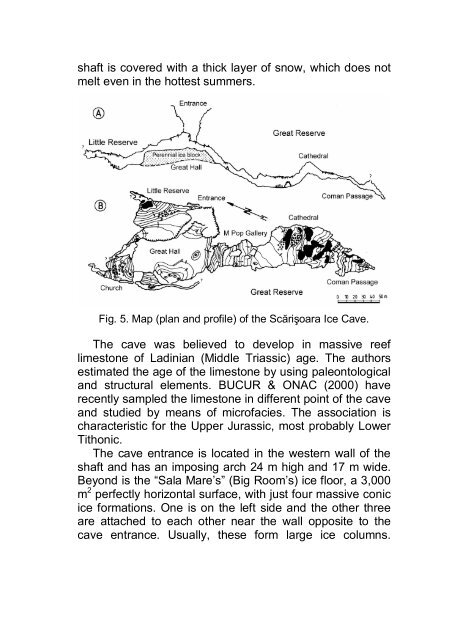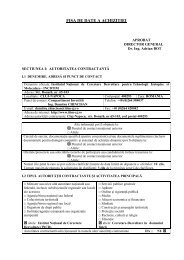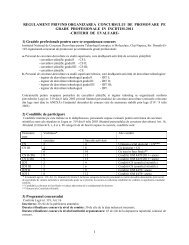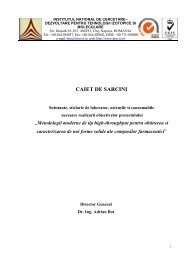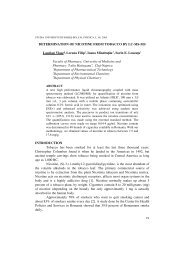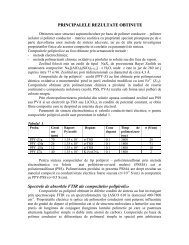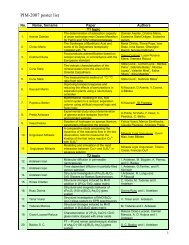Karst and caves in the Bihor Mountains - ITIM
Karst and caves in the Bihor Mountains - ITIM
Karst and caves in the Bihor Mountains - ITIM
- No tags were found...
Create successful ePaper yourself
Turn your PDF publications into a flip-book with our unique Google optimized e-Paper software.
shaft is covered with a thick layer of snow, which does notmelt even <strong>in</strong> <strong>the</strong> hottest summers.Fig. 5. Map (plan <strong>and</strong> profile) of <strong>the</strong> Scărişoara Ice Cave.The cave was believed to develop <strong>in</strong> massive reeflimestone of Lad<strong>in</strong>ian (Middle Triassic) age. The authorsestimated <strong>the</strong> age of <strong>the</strong> limestone by us<strong>in</strong>g paleontological<strong>and</strong> structural elements. BUCUR & ONAC (2000) haverecently sampled <strong>the</strong> limestone <strong>in</strong> different po<strong>in</strong>t of <strong>the</strong> cave<strong>and</strong> studied by means of microfacies. The association ischaracteristic for <strong>the</strong> Upper Jurassic, most probably LowerTithonic.The cave entrance is located <strong>in</strong> <strong>the</strong> western wall of <strong>the</strong>shaft <strong>and</strong> has an impos<strong>in</strong>g arch 24 m high <strong>and</strong> 17 m wide.Beyond is <strong>the</strong> “Sala Mare’s” (Big Room’s) ice floor, a 3,000m 2 perfectly horizontal surface, with just four massive conicice formations. One is on <strong>the</strong> left side <strong>and</strong> <strong>the</strong> o<strong>the</strong>r threeare attached to each o<strong>the</strong>r near <strong>the</strong> wall opposite to <strong>the</strong>cave entrance. Usually, <strong>the</strong>se form large ice columns.


